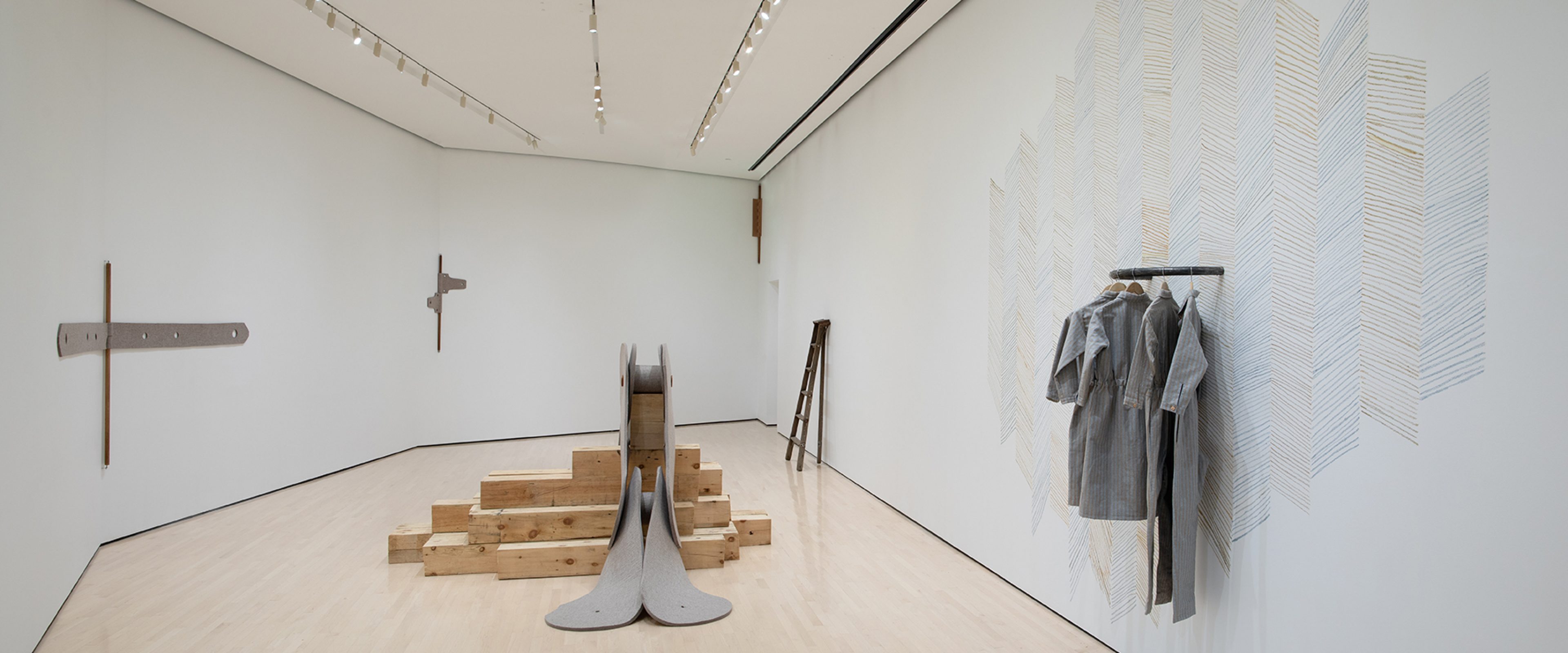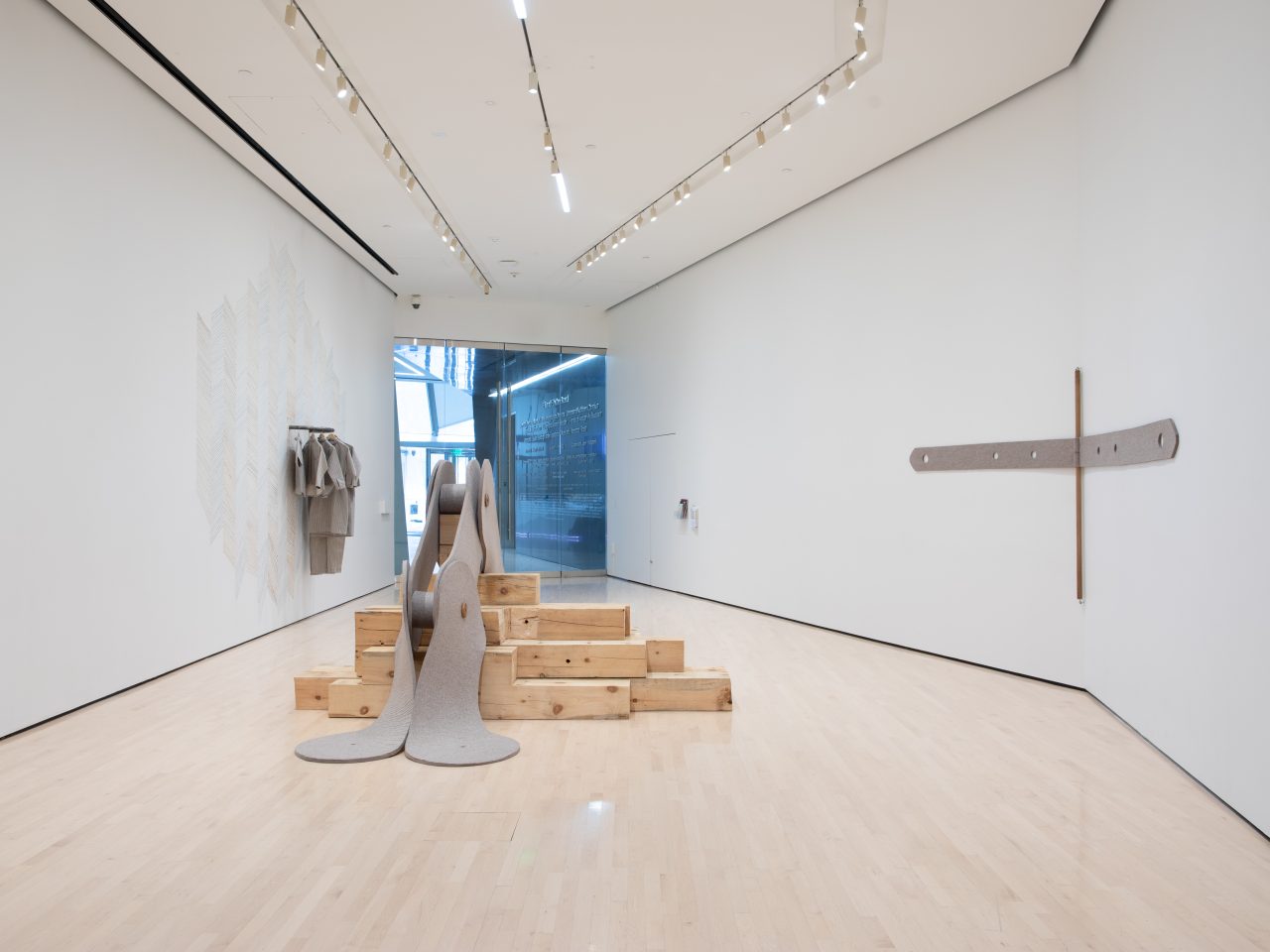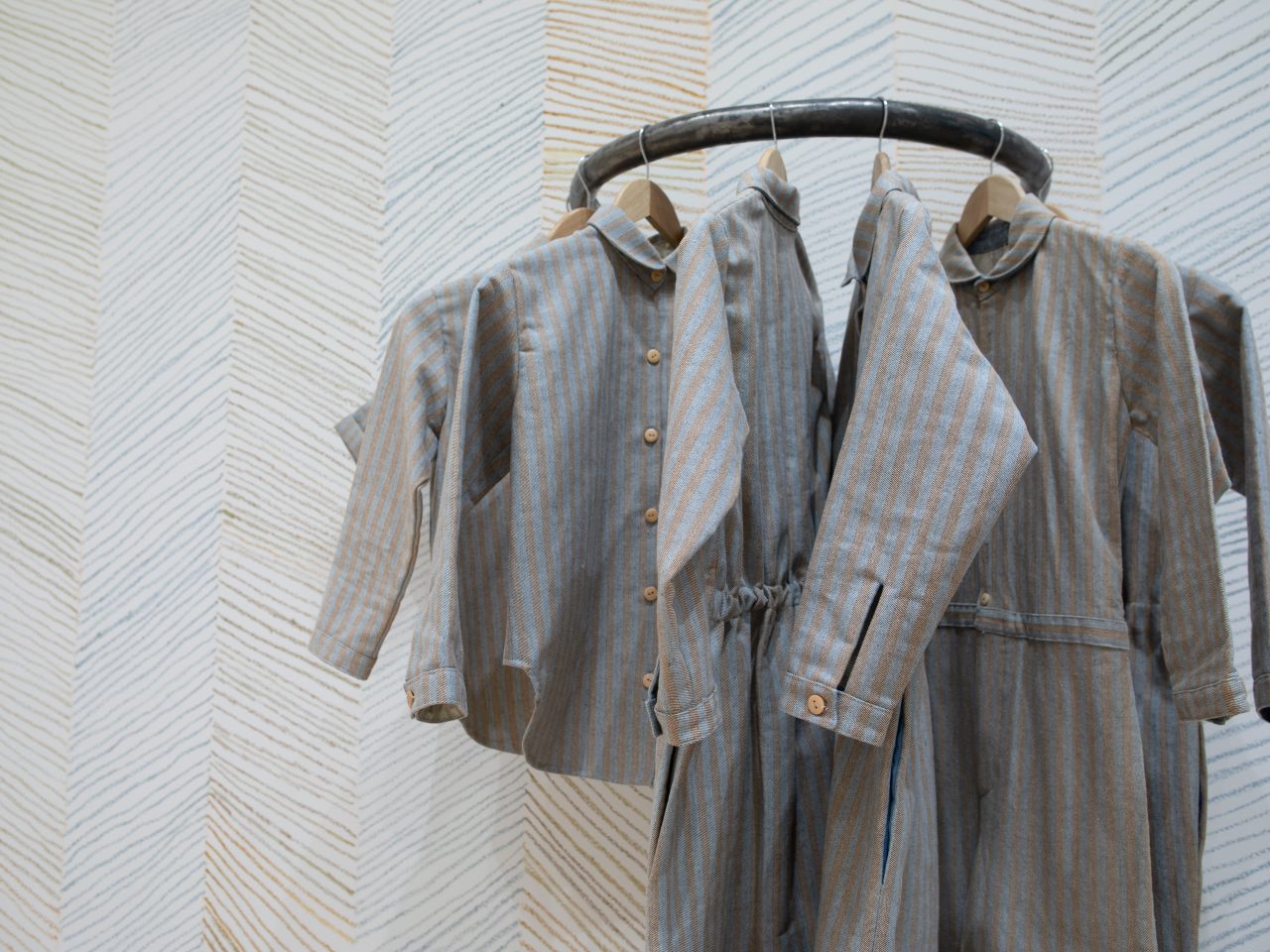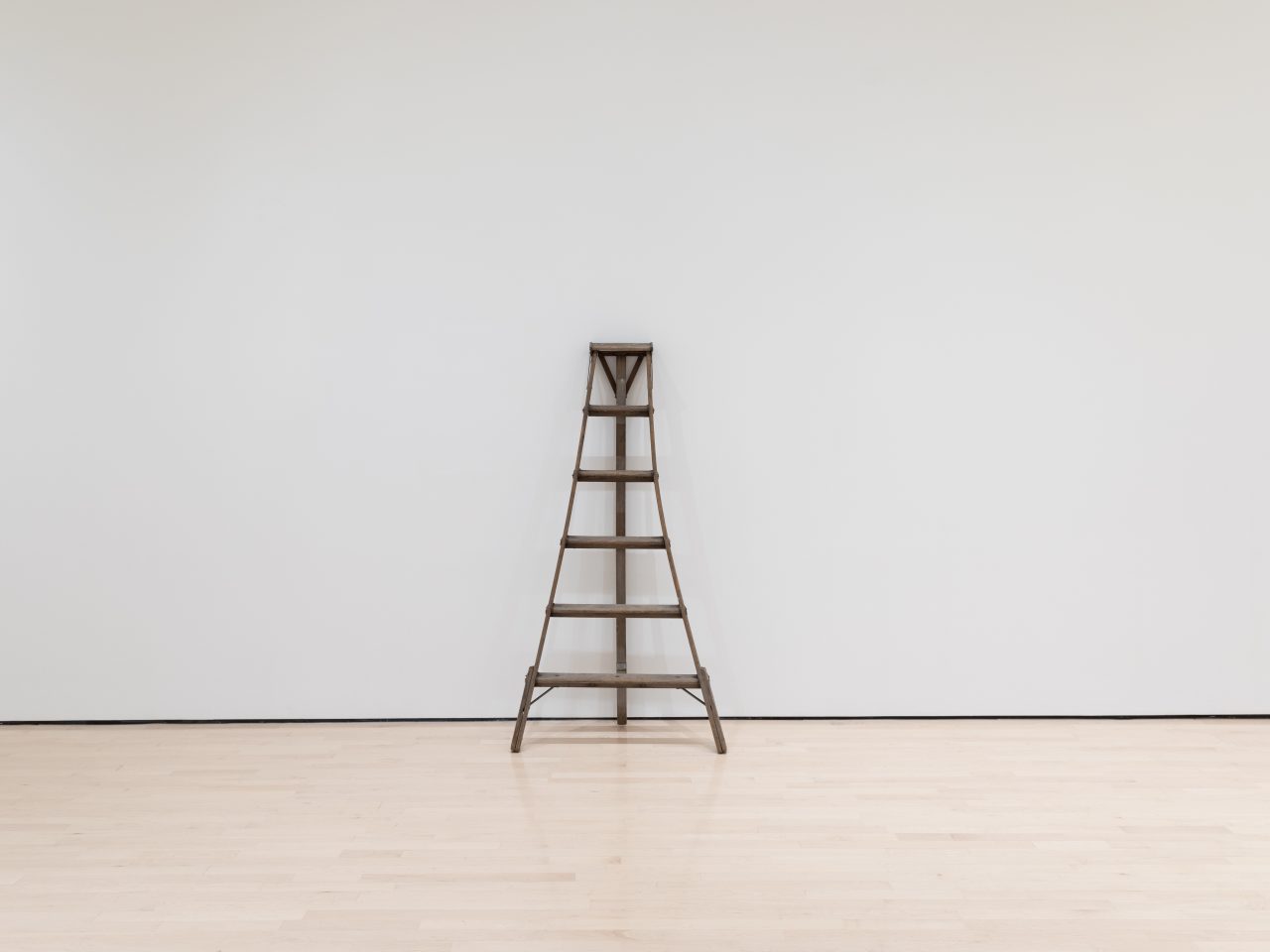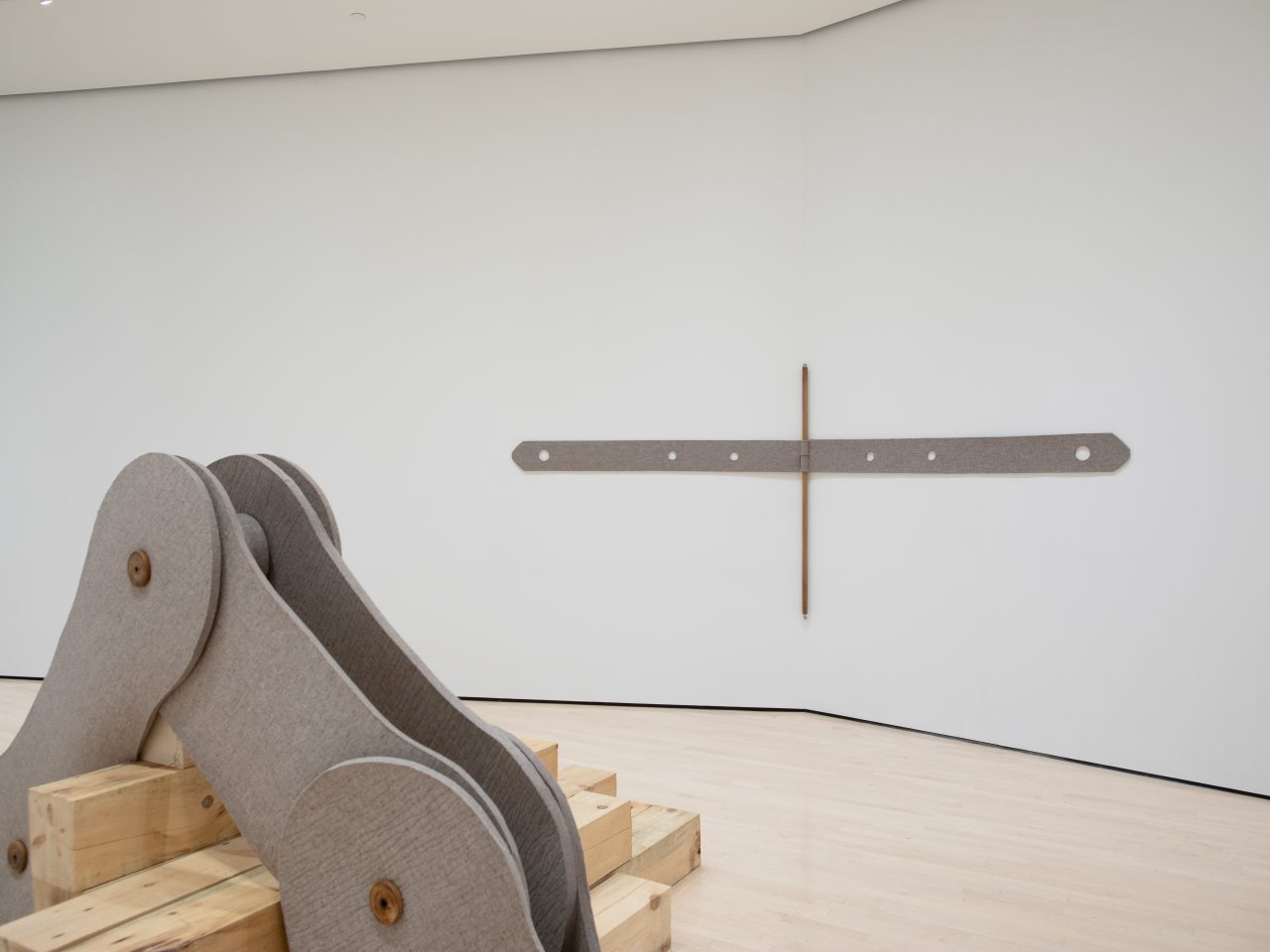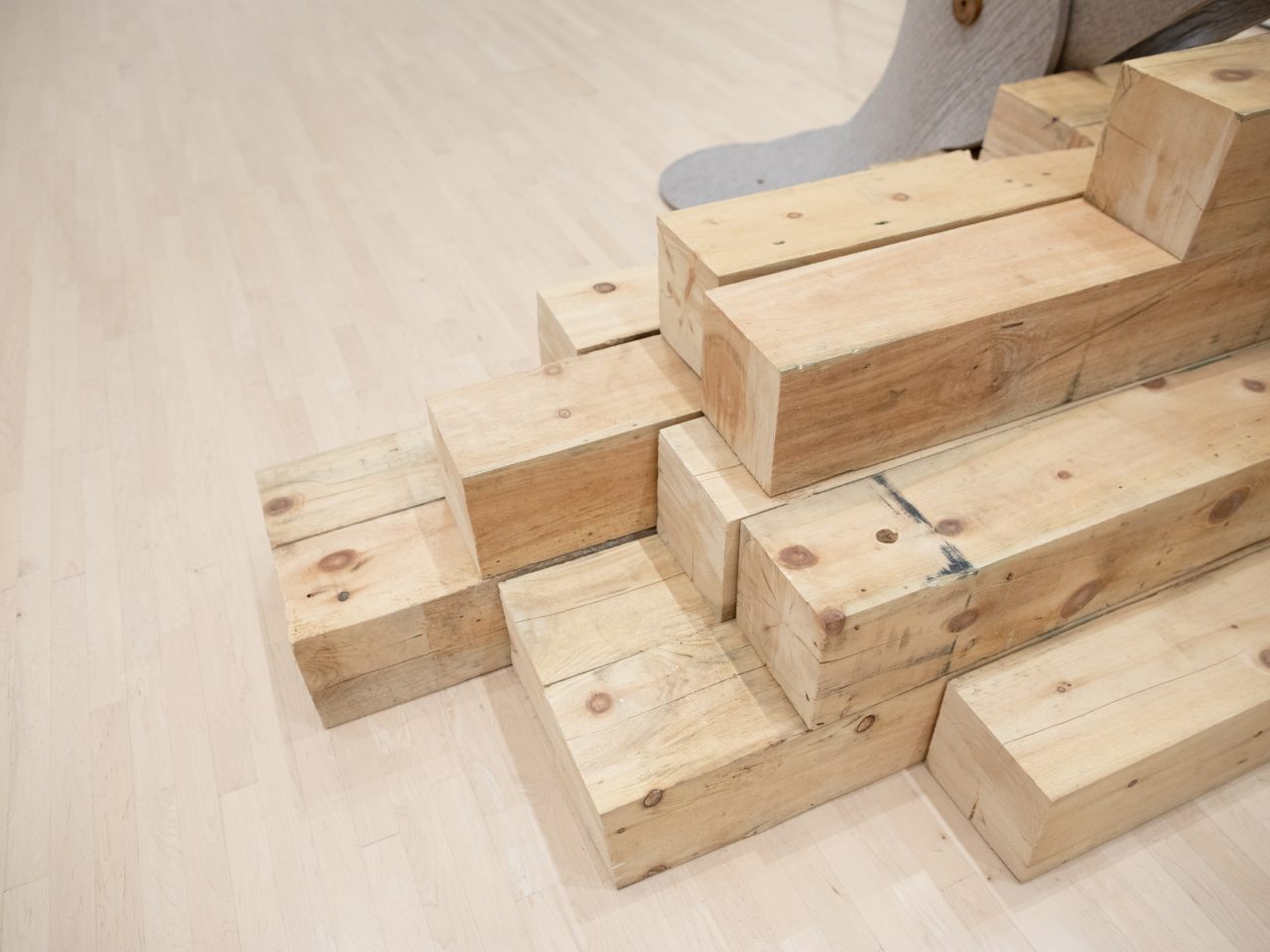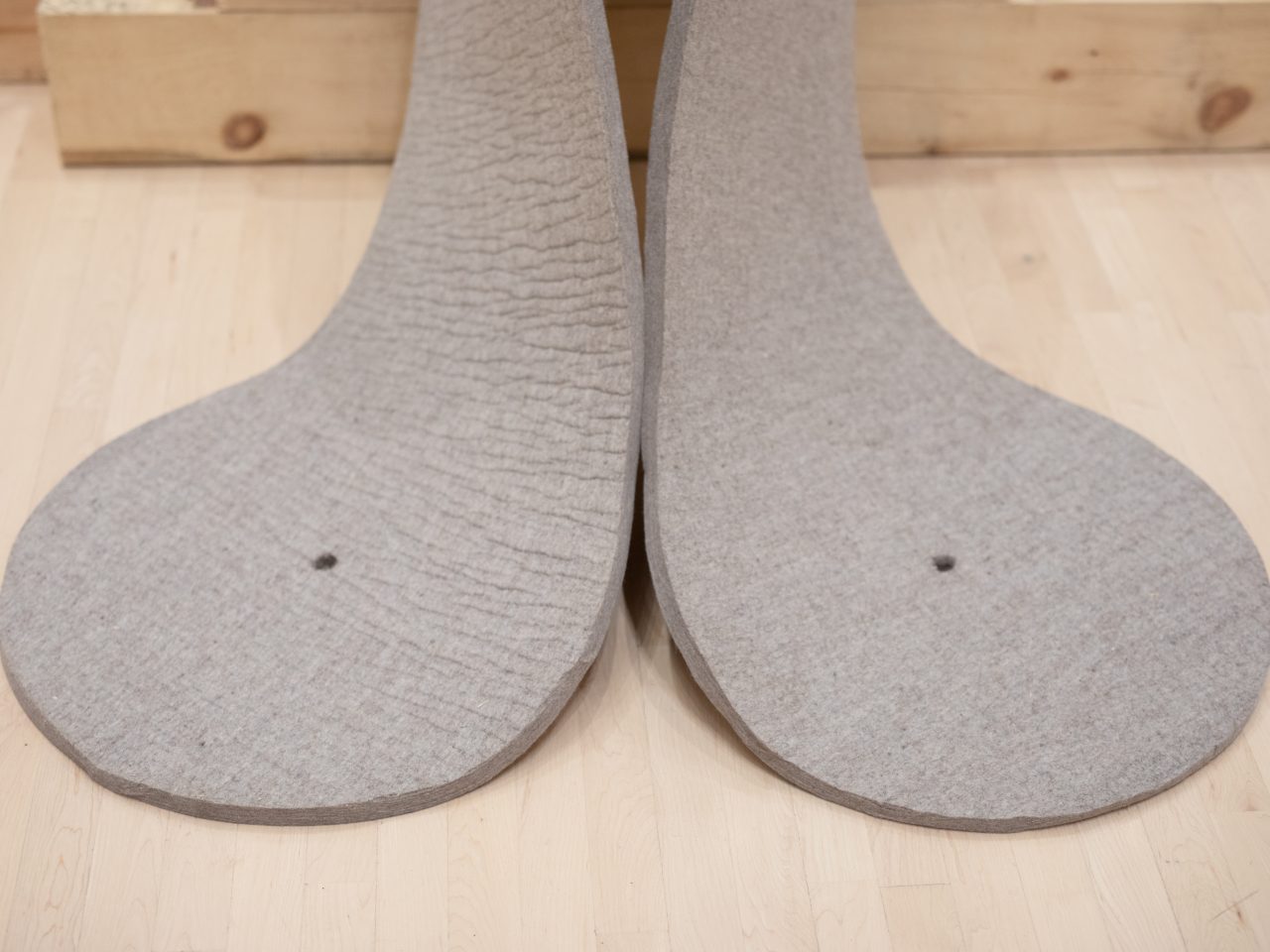Field Station: Johanna Unzueta is organized by the Eli and Edythe Broad Art Museum at Michigan State University and curated by Carla Acevedo-Yates, Associate Curator. Support for this exhibition is provided by the MSU Federal Credit Union.
About the Exhibition
From My Head to My Toes, to My Teeth to My Nose
Johanna Unzueta’s works address notions of labor, productivity, and progress. Made using natural materials such as felt and wood, manipulated and combined with recycled objects from old factories, her labor-intensive, handmade constructions emulate industrial architecture, tools, and machinery. Thinking of the history of tool making, and of tools as extensions of the body, Unzueta rereads the technological advances of the Industrial Revolution through the body. In this way she brings our attention to common objects that serve very specific, practical purposes, but that we often take for granted and have effectively become invisible to us.
Often described by the artist as “humble objects,” the hinges and the chain in the exhibition From My Head to My Toes, to My Teeth to My Nose are indeed common—they rarely seek any type of protagonism. They are made of 100 percent natural felt and arranged in site-responsive configurations that are projections of the body. A hinge “hugs” a corner of a wall; a chain made using Unzueta’s whole body as a pattern becomes a stand-in for the artist herself.
A mural, made in collaboration with four MSU students, emulates the herringbone pattern of handmade garments that resemble uniforms of industrial workers. The fabric used to make these garments is sourced from a factory in Guatemala that uses old jeans and natural cotton. The lines that comprise the mural were made freehand by the students, and in their uneven and irregular ways are projections of the movement of their individual bodies.
The exhibition also speaks to Michigan’s agricultural history, and Michigan State University specifically, by including from the MSU Museum collection a three-legged cherry picking ladder—a tool whose form improves upon the human one to make harvesting fruit easier and more productive. This common tool, situated among Unzueta’s sculptures, furthers the idea that tools are reflections and extensions of ourselves. Unzueta aims to humanize these objects, and urges viewers to think about their own relationship to the history of technology and the objects that facilitate everyday life.
